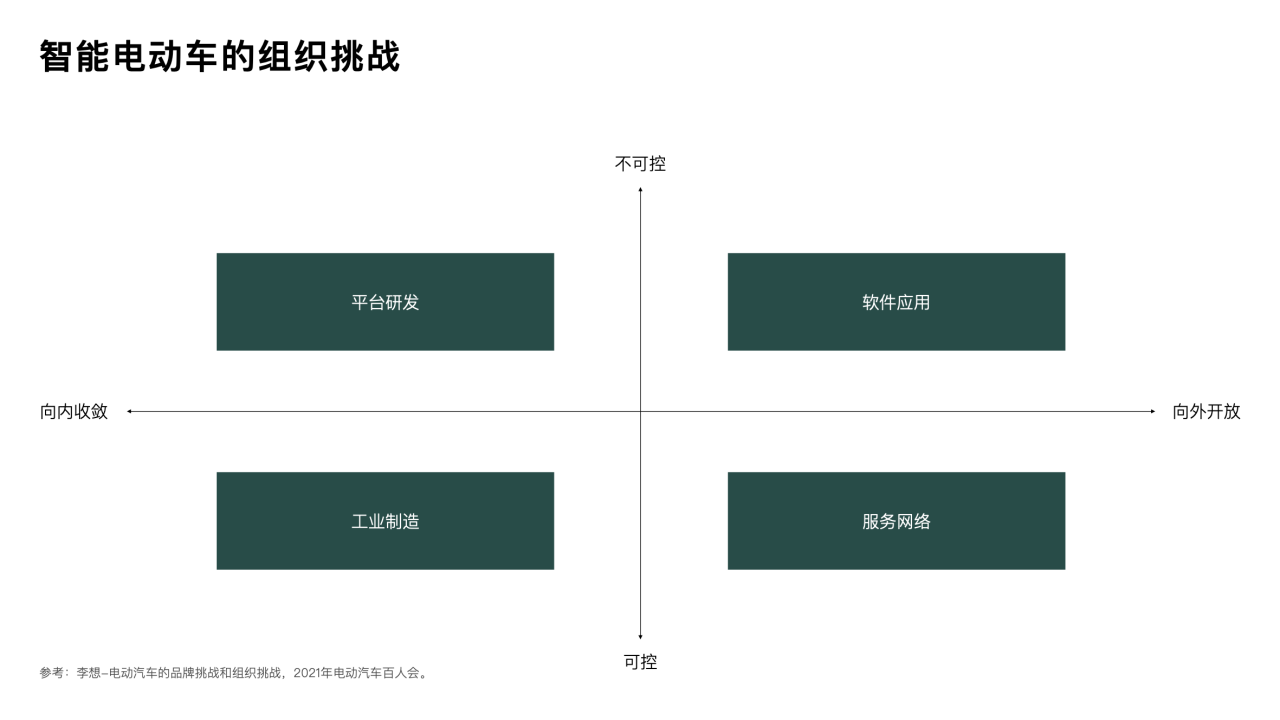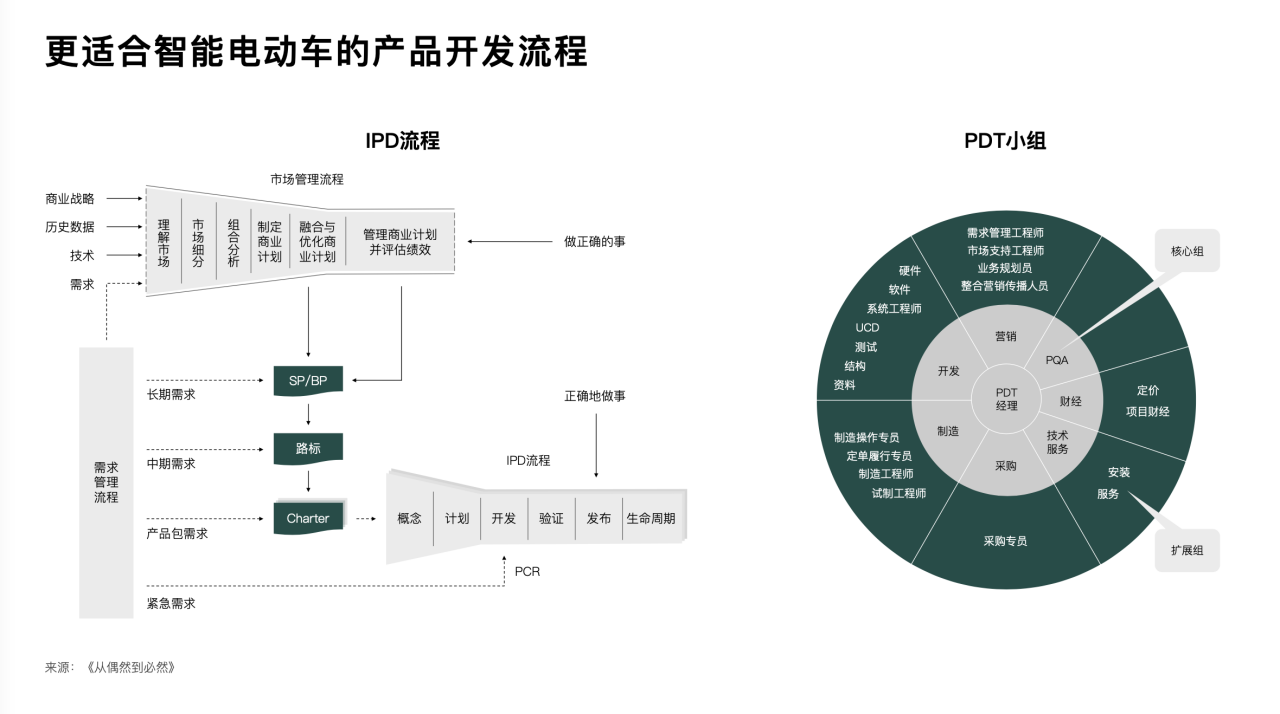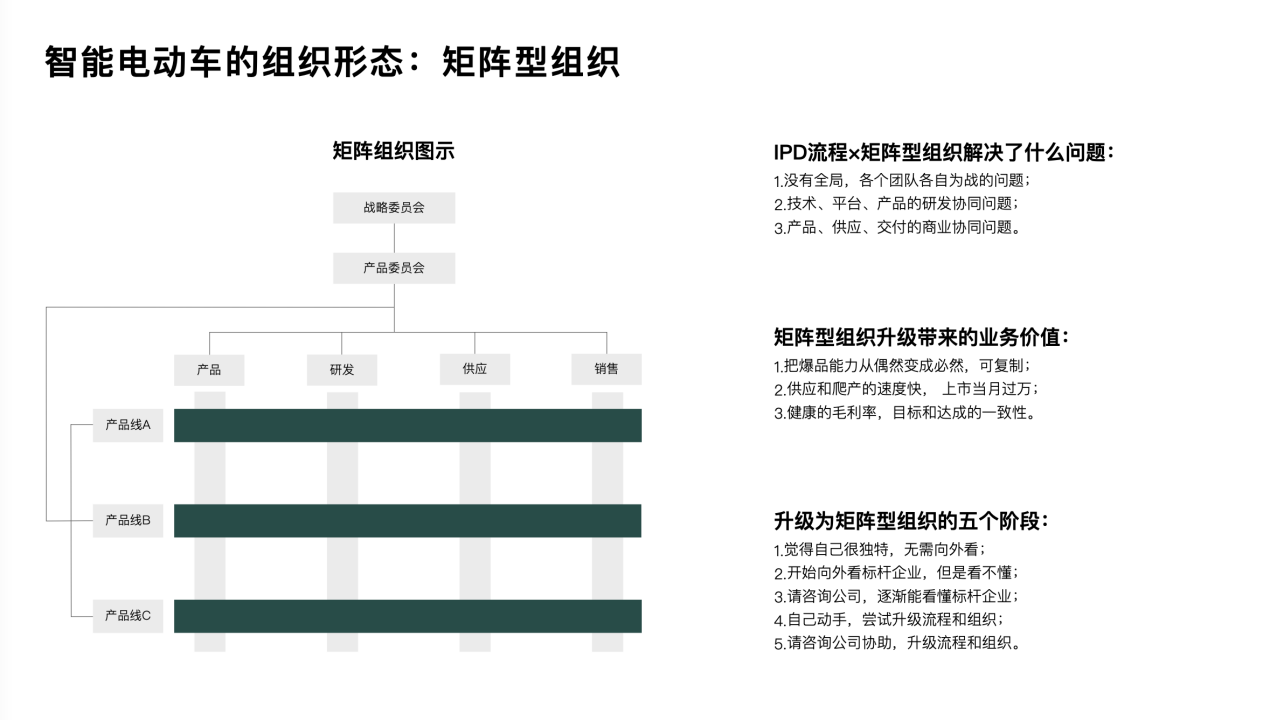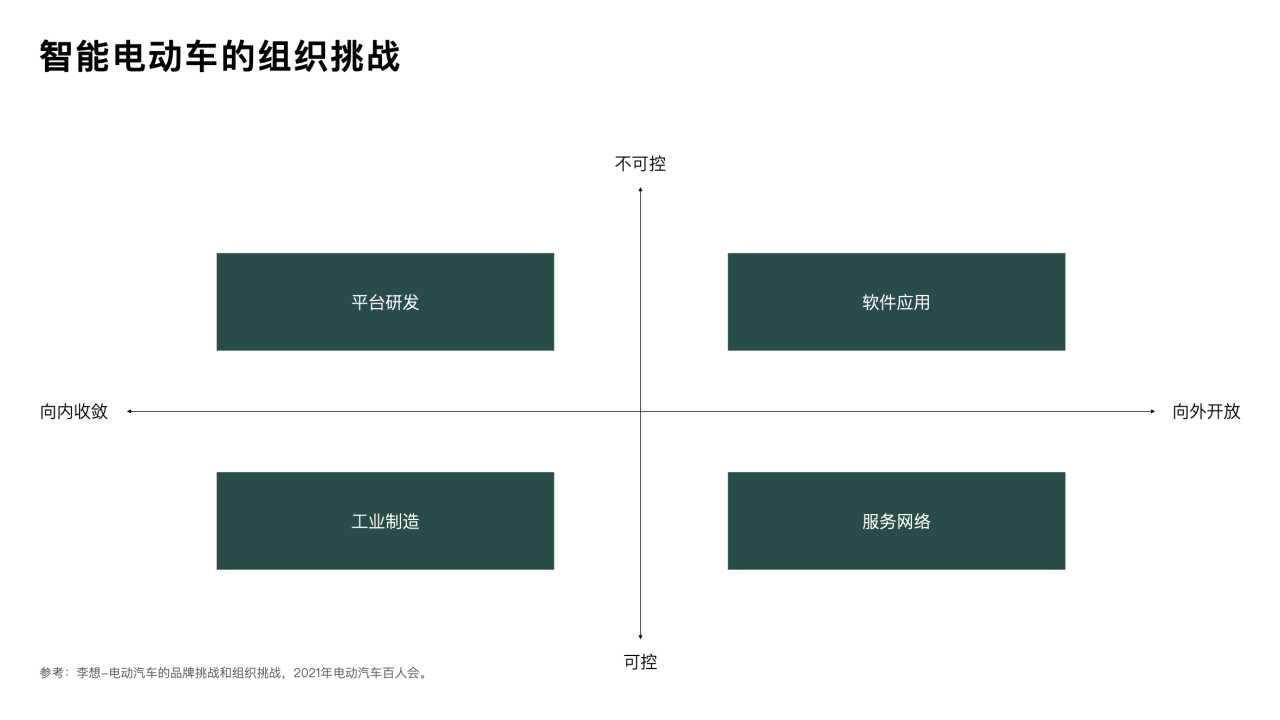Translate the following Markdown Chinese text into English Markdown text in a professional manner, preserving the HTML tags within the Markdown, and outputting only the result:
Hosted by China EV100, and co-organized by Tsinghua University, China Society of Automotive Engineers, China Association of Automobile Manufacturers, China Automotive Technology and Research Center, and China Automotive Engineering Research Institute, the China EV100 Forum (2023) opened in Beijing.
The forum invited representatives from relevant government departments and leading companies in the automobile, energy, transportation, urban, and communication industries to hold in-depth discussions on topics such as global automotive industry trends, high-quality development paths for new energy vehicles, China’s intelligent connected vehicle development strategy, power battery and other core industrial chain supply chain trends, new generation automotive consumption transformation trends, automotive and energy coordinated development strategies, new transportation energy security systems, commercial vehicle transformation directions, innovative paths for automotive aftermarket, and digital and intelligent manufacturing models for automobiles.
At the 2023 China EV100 Forum · High-Level Forum, Li Xiang’s speech topic was Organizational Challenges of Intelligent Electric Vehicles, covering the following highlights:
- Upon entering the automotive industry, Li Xiang discovered that the biggest challenge in the electric vehicle industry is organizational.
- Lixiang Auto has two most important products: one is the automobile, which faces consumers outwardly; the other is the organization, which faces employees inwardly.
- Lixiang is a company with four dimensions: platform R&D, software applications, industrial manufacturing, and service network.
Li Xiang also specifically talked about the five stages of upgrading to a matrix organization:
- Feeling unique and unwilling to learn;
- Starting to look at benchmark companies without understanding them;
- Hiring consulting companies to gradually understand benchmark companies;
- Taking initiative to upgrade the organization;
- Enlisting consulting companies for assistance in upgrading the organization and processes.
Below is the original text of Li Xiang’s speech:
Respected Chairman Wan, Chairman Chen, Minister Miao, all friends present,
Good afternoon!
The topic I am sharing with you today is – Organizational Challenges of Intelligent Electric Vehicles. Before entering the automotive industry, I worked in the Internet industry. Of course, the Internet product I worked on was Autohome, which is related to automobiles, so I had some knowledge of the automotive industry. However, when I truly entered the field, I realized how long the automotive industry chain is and how great the difficulties are. The biggest challenge among them comes from organizational capabilities. As the founder of an intelligent electric vehicle company, I believe we have two most important products: one is the intelligent electric vehicle product for consumers, and the other is the organizational capability for employees. This is actually like drawing two circles; if one circle is drawn very large and the other is small, it will cause a huge waste. Therefore, we try our best to make the two circles roughly the same size to ensure overall efficiency and value.In the beginning, when we founded the company in 2015, we recruited many experienced research and development engineers from traditional automakers. However, after operating for about a year, we faced a significant problem. For example, each company has a different definition of how to solve issues. Therefore, within our organization, engineers from different traditional automakers each had their ideas, and everyone believed they were right, and others were wrong. We began to realize that, as a company, the most important aspect of our organizational process is how to create a universally acknowledged and standard path, how to plan and construct it, and how to manage it. This is an indispensable core competence of an automotive company.
Organizational Challenges of Intelligent Electric Vehicles

Upon entering the automotive industry, we found that it was much more difficult than we initially thought. We summarized and planned the business directions that an organization would need to face in a simple analysis. This content was the same as what I shared at the Electric Vehicle 100-Person Forum in January 2021. Through this chart, we can see that as a company just entering the automotive industry, we must become four different businesses simultaneously, each facing problems of diverse complexity levels.
First, we have to develop our automotive products and manage supply chains while manufacturing the vehicles, making us an industrial manufacturing enterprise – a standard automotive company. However, we are also very different from traditional automakers because we all know that electric vehicles are costly. As a company selling vehicles priced above 300,000 yuan, we don’t have the financial resources to provide products to 4S stores with costs similar to BBA. Therefore, we need to go direct, enabling us to sell a car at approximately 1/3 of the cost. But going direct has its challenges, as we now need to become a “4S store group,” albeit direct-operated. As a 4S store group, we are responsible for managing vehicle sales, after-sales services, and delivery work, turning us into a service network system. As a standard large 4S store group, we now have more than 700 stores nationwide, offering vehicle retail, delivery, maintenance, and more. At the same time, we are also an internet application company, an area in which we have been quite skilled. We need to develop apps and applications while connecting cloud services and databases. Therefore, we are also a standard internet company, providing software and applications to users.These three types of companies necessitate entirely distinct management approaches, as individuals from internet firms, automotive industries, and retail sectors, such as Starbucks and IKEA, are unaware of how to collaborate. As a result, not only do we learn the processes and work styles of the most advanced companies in each sector globally, but we also recruit individuals with such expertise. Another critical method is adopting the popular Objective-Key Results (OKR) approach in recent years, linking these departments through goal management and effective communication tools. Consequently, we successfully completed the development of our first car in 2019 and began delivering in 2020.
However, at this phase, we face new challenges, such as the need to further advance in research and development (R&D) because we recognize that selling only one car model is inadequate; multiple models must be offered. Nevertheless, selling several models necessitates owning an R&D platform, which is more complex than traditional automotive R&D platforms. For instance, when developing a range-extended electric platform, we must research and develop software and hardware for body domain and power domain, including XCU central pre-control systems, vehicle VCU functions, EMU activities on the range extender, and air suspension, CDC control, and seating systems. Therefore, we realize that our current tasks are even more complicated than those of traditional tier-one suppliers because, after researching and developing a system, we can only use it for ourselves, but we must do it independently. As a result, our range-extended electric system, intelligent cockpit system, and smart driving system have all been developed entirely in-house.
The organizational challenges in conducting full-stack independent R&D are even more significant. At the outset, there was no basic planwithin our teams, so they had to work separately. Each vertical department served as both the command center and the combat force, causing everyone to conduct research on their own route and disrupting the overall R&D system. Therefore, we began to ponder and study the management strategies of the world’s most advanced firms, with hundreds of billions or even trillions in revenue. This challenge has grown even greater, as we must merge this capability with our existing internet company abilities, automobile dealership group capabilities, and automotive industry enterprise capabilities – an especially tough problem we encountered in 2022.A Product Development Process More Suitable for Intelligent Electric Vehicles

The only solution to the challenges we face is to learn from global best practices, as we are not the only ones dealing with such issues. Thus, we studied and researched the best companies globally, such as outstanding enterprises like IBM and Huawei. This image is quoted from a book published by Huawei called “From Chance to Inevitability.” How should we address such issues when we put technology, platforms, and product development together? Through research and learning, we discovered that many excellent companies have solved similar problems. However, one question remains – can the methods and organizational capabilities of companies like Huawei and Apple, which are engaged in communication or consumer electronics industries, apply to the automotive field?
Since 2020, we have made an important attempt from the research and development perspective. We have comprehensively learned from such capabilities and found that it has solved our problems from two dimensions. Due to the long chain and cycle, and business complexity, we ensure clear planning from the beginning and involve more teams in the planning process. After clarifying the plan, we turn it into a schedule. In the scheduling process, we effectively allocate resources based on team collaboration and resource review. This differs from the previous linear process, transforming traditional automotive R&D into a three-dimensional process. This brings benefits from another dimension, the operational perspective. In this diagram, the PDT manager acts as the command center and the teams responsible for design, software, and hardware are the combat forces. At this point, the command center can uniformly manage the combat forces, deciding when the air force and artillery should come into play. This solved our biggest problem at the time – disorganized operations. When our company size reached tens of thousands of people, it posed a tremendous challenge. We discovered a particularly suitable process, which we have been practicing since 2020, but it is limited to the organizational dimension of automotive R&D.
Organizational Structure for Intelligent Electric Vehicles: Matrix Organization
[Image]
To adapt to this process, we also changed our organizational structure from a functional organization to a matrix organization. This process and matrix organization have helped us solve several problems. Firstly, it addressed the issue of lack of global perspective and individual team battles; secondly, it resolved the collaborative problem of technology, platform, and product development; and thirdly, it addressed the commercial collaboration issue of products, supply chain, and delivery. These were the problems that baffled us at the time.In the past 2 years, the practice of process and organization has brought us tangible value. Firstly, our ability to make the Leading ONE a popular product can be replicated to all models, whether it’s Leading L9, L8, or L7. After their launch, they will become popular products and the best-selling ones in their respective niches.
The second benefit is the improvement of supply and capacity ramp-up speed. Even under the pandemic situation, Leading L9 and L8 can achieve deliveries of over 10,000 units in the second month after their launch, which is a significant change. The third benefit, an unexpected gain, is that under such process and organizational structure, we have cultivated many people with business acumen who not only think about making money but also control costs throughout the entire process. This allows us to achieve a healthy gross profit margin and ensure consistency in revenue and cost targets. This is the validation we’ve gained from our past practices and we would like to share it with our peers.
As a smart electric vehicle company, the process and organizational management approach of a matrix organization such as IPD is quite effective. It can be applied not only in the most advanced IT companies but also in automotive companies, including smart electric vehicles and traditional ones. Employees of Leading Automobile, including those from tier 1 suppliers, embrace such changes, as it’s like transitioning from dirt roads or residential internal roads to actually driving on national highways and expressways.
However, we have faced a significant challenge over the years. We went through five stages in implementing a matrix organization and would like to share them with you. As an internet car company, we are different from others. In the first stage, we were like frogs at the bottom of a well, never looking outwards. We suffered some losses and pitfalls during this stage but still insisted on not looking outwards. Consequently, the second stage was quite painful, as we started to look outwards but still couldn’t understand why those trillion-dollar companies were so complicated and constantly undergoing change.
During the third stage, we started to utilize the capabilities of some consulting companies and hired consultants from these excellent firms to help us understand why we needed to solve certain problems at this stage and what the underlying reasons were. They showed us how to use processes to address human issues and how to use culture to solve problems of human nature. In this stage, we finally started to understand and think more clearly. However, in the fourth stage, we still continued to take detours, often assuming that understanding would lead to successful execution on our own.In fact, some employees’ capability models are misaligned. In large companies, there are people building roads and others driving cars, but we often ask drivers to build roads, which wastes a lot of time in the fourth stage. By the fifth stage, we began to understand which people were helpful in building roads for these enterprises at each stage, so we invited such people to help us plan, build, and operate roads. If we were to make an analogy for our organization, all employees are here to drive and deliver value, but whether we can build good highways and run them well determines the transmission efficiency of value.
Challenge – What Kind of Organization Adapts to Software 2.0

The transformation of our matrix organization is just starting, and I believe it won’t be completed until at least 2025. Organizational change can’t be accomplished overnight, and its R&D and promotion cycle is even longer than that of products and platforms. However, we face a new challenge: the arrival of AI’s Software 2.0 with large models.
Let’s look at how the two best-performing companies in this field do it. The first is Tesla. Current AI is divided into two types of learning: behavioral learning, or training the brain to let the cerebellum work, such as in autonomous driving; and the other type is training the brain to let it work, similar to OpenAI and ChatGPT. As we embrace these models, a massive shift occurs. For example, we used to need about 10 million frames of auto-driving images to be manually annotated per year, so we hired many outsourcing companies to do this at around 6 to 8 RMB per frame, costing nearly 100 million RMB a year for just auto-driving image annotation. But when we use large Software 2.0 models to automate annotation through training, results are staggering: tasks that took a year can now be completed in just three hours, and efficiency is increased 1,000-fold. The work in this field has completely changed.
For employees, it feels like they are in a fistfight against armed opponents. Under such circumstances, how can we integrate Software 2.0 with existing talent, provide them with new workflows and incentives, and implement hiring and placement? This presents an even greater challenge. It is not only a challenge for Ideal Motors, but also for all entrepreneurs and businessmen in the automotive industry who are present. I hope we can have more opportunities to communicate and explore in this area.Thank you everyone!
This article is a translation by ChatGPT of a Chinese report from 42HOW. If you have any questions about it, please email bd@42how.com.
